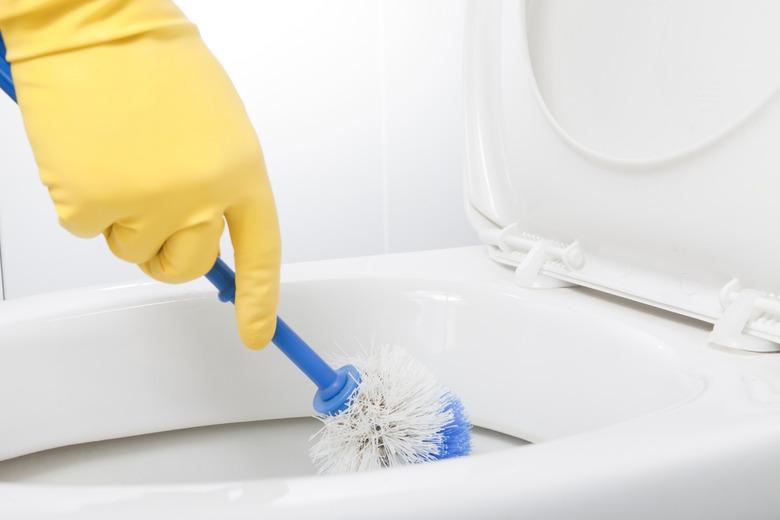What Is The Pink Ring In The Toilet Caused By?
That pink ring in the toilet just above the water line could be caused by minerals in the water, but, more likely, it's from a colony of the airborne bacteria Serratia marcescens. This bacteria isn't as harmless as it was once thought to be, but it isn't a cause for alarm either. Additionally, it isn't difficult to kill, although a new colony is likely to grow if you don't take appropriate preventative measures.
The Source of Most Pink Toilet Stains
The bacteria Serratia marcescens is familiar to laboratory biologists because it's one of the most common contaminants of petri dishes. It's possible that this pink bacterial is the cause of a feast day in the Catholic church by creating the blood-like red color that Father Peter of Prague noticed on the Eucharist one day in 1263. Serratia marcescens comes from soil and dust, and it thrives on moisture and phosphates, which is why you often find it growing in soapy showers or on the soap dish itself. It's a pathogen, but it's more problematic in hospitals and laboratories, where sterility is of utmost importance, than in your bathroom.
Controlling Serratia Marcescens
Serratia marcescens is present in the air — it comes from the outside and is carried in on microscopic dust particles — so you can't eliminate it entirely. It particularly likes the environment inside your toilet, especially just above the water line, and it feeds on phosphates in human waste. These attributes make it sound like a microscopic "creature from the black lagoon," so it's good to remember that it's easy to kill. Pouring a bowl cleaner that contains chlorine into the toilet, allowing it to work for a few minutes and swishing it off with a toilet brush is all it takes.
Mineral Stains
Certain minerals in hard water, including manganese, iron and copper, can cause orange or pink stains, and it's also common for these to collect just above the water line. They aren't as easy to remove as bacteria or mold stains, because they bind more closely with the porcelain bowl. Vinegar and lemon juice, which are both acidic, will dissolve the minerals causing these stains, but they need time to work; just pouring them in the bowl probably won't have much effect. Instead, make a vinegar or lemon juice paste using borax as a thickener, spread the paste on the stains and wait overnight. The stains should flush away in the morning.
Preventing Pink Stains
Both bacteria and mineral stains will come back again unless you take steps to control them, and the easiest way to control both at once is to use a toilet bowl cleaner that contains both chlorine and an acid. Spread this on the inside of the bowl, leave it for 5 to 10 minutes and brush the bowl; if you do this once a week, you shouldn't ever see pink discoloration. Avoid scrubbing the bowl with an abrasive cleaner; if you etch the porcelain, you'll simply provide more surface area on which the bacteria can grow and the minerals can collect.
